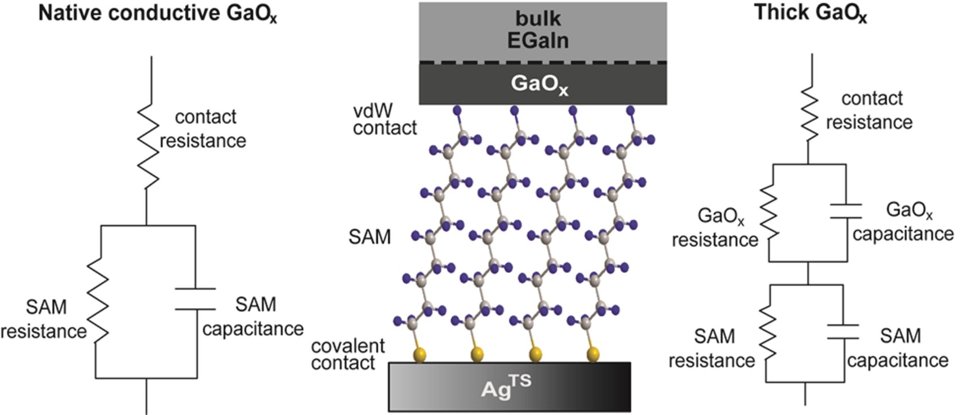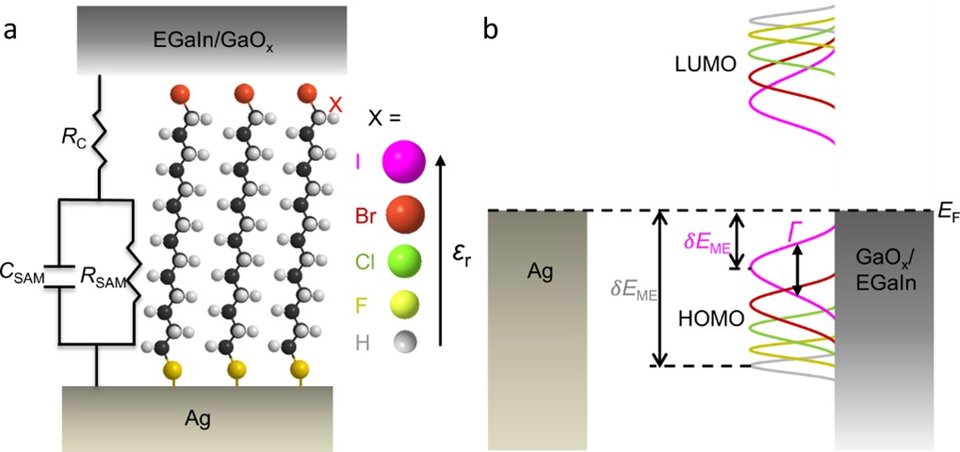Usually, the electrical characteristics of molecular tunnel junctions are determined by DC methods while the dielectric response of molecular junctions remains virtually unexplored. In addition, it is difficult to disentangle the contribution of each component of the junction, e.g., the molecule−electrode contacts, protective layer (if present), or the self-assembled monolayer, to the electrical characteristics of the junctions using DC methods. Frequency dependent AC measurements (impedance spectroscopy) make it possible to separate the contribution of each component of the molecular junction and to determine the capacitance, and, thus, the dielectric constant, of the monolayers inside the junctions. The figure below shows a molecular junction with two possible equivalent circuits. We found that the equivalent circuit on the left applies where the contact resistance is dominated by the SAM−top contact resistance and not by the conductive layer of GaOx (J. Am. Chem. Soc. 2014, 136, 11134-11144).

We used this technique to demonstrate a 4-fold increase in the dielectric constant (see Adv. Mater. 2015, 27, 6689–6695) and a reduction of the tunnelling decay constant by a factor of 3 (in effect turning insulating molecular wires to molecular conductors; Nat. Commun. 2021, 12, 3432) by altering a single polarizable atom in monolayers with aliphatic SAMs (Figure below). Although this change in tunnelling decay constant can be in part explained by changes in the energy level alignment of the system, it is still puzzling why the dielectric constant changes so dramatically. In contrast, in conjugated monolayers polarizable atoms virtually had no influence on the charge transport properties of the junctions (J. Phys. Chem. Lett. 2019, 10, 4142-4147). Such experiments reveal the complexity and large number of factors that are detrimental in the measured charge transport rates across molecular junctions.

Recently, we also have reported that the dielectric constant increases with molecular length in monolayer of oligoglycine and glycol (ACS Appl. Mater. Interfaces 2020, 12, 45111-45121) which is rather surprising because in bulk materials the dielectric constant is independent of the size of the bulk materials. These examples show the importance to improve our understanding of the dielectric behaviour of molecules at the nanoscale in opto-electronic devices.
